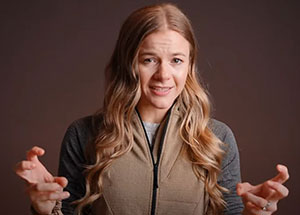 First things first. What do I mean when I say tiny guns? For the purposes of this video, we're going to define tiny guns as guns, smaller in size than the ever popular Glock 42. Some folks also refer to this size category as pocket guns. While this category pistol doesn't have tightly defined boundaries, here are some examples of guns that we would consider tiny for the purposes of our holsters. Now, tiny guns should be easy to conceal, but ironically, tiny guns can actually be quite a struggle to conceal when wearing them on a traditional belt holster or an enigma. And this is due to something called the Keel principle. Simply put, the keel principle just means that tiny guns don't have enough mass below the waterline, your belt line, so they tend to tip out at the top like the keel on a sailboat. The length of the holster below the belt normally helps balance the weight, making it more concealable and comfortable. But since tiny guns have short muzzles, they don't have enough keel below the belt to be balanced. This makes the grip of the firearm want to tip out and print while the muzzle digs in and creates an uncomfortable hotspot.
First things first. What do I mean when I say tiny guns? For the purposes of this video, we're going to define tiny guns as guns, smaller in size than the ever popular Glock 42. Some folks also refer to this size category as pocket guns. While this category pistol doesn't have tightly defined boundaries, here are some examples of guns that we would consider tiny for the purposes of our holsters. Now, tiny guns should be easy to conceal, but ironically, tiny guns can actually be quite a struggle to conceal when wearing them on a traditional belt holster or an enigma. And this is due to something called the Keel principle. Simply put, the keel principle just means that tiny guns don't have enough mass below the waterline, your belt line, so they tend to tip out at the top like the keel on a sailboat. The length of the holster below the belt normally helps balance the weight, making it more concealable and comfortable. But since tiny guns have short muzzles, they don't have enough keel below the belt to be balanced. This makes the grip of the firearm want to tip out and print while the muzzle digs in and creates an uncomfortable hotspot.
Sometimes holster manufacturers try to solve this imbalance by putting the grip of the gun closer to the belt, or in the case of belly bands and corset holsters by covering it with fabric altogether. This sort of works, but it causes an unacceptably slow and impeded draw, and it's essential to have proper grip clearance on your holster so that you can draw the gun quickly and safely in an emergency. To avoid fumbles and tragic mishaps, you must be able to get your hand fully around the grip of the gun before the gun clears the holster. And it's for these reasons we don't recommend holsters that Compromise Grip clearance to improve concealment. Note that this is a separate from the topic of deep carry, which is when you deliberately carry your gun below your waistband. Deep carry holsters must also provide proper grip clearance, so the same principles really apply here too, with the gun inserted into the holster.
Check that you have enough space to put a US quarter size between the grip of your gun and the wing of the holster. If you find that you have larger hands, make sure you have enough room to fully grip the gun without interference from the holster's wing. Grip clearance and the Keel principle are the most notable concerns to take into consideration when planning to carry pocket-sized pistols inside the waistband. If you'd like to learn more about using a tiny gun on the Fieldster enigma, make sure to check out this video next. And if you're planning to conceal a pocket size pistol or any size pistol for that matter, deep concealed, then I'd recommend you watch this video next. Thanks for watching, and we'll see you in the next video.
YouTube Video Link: https://www.youtube.com/watch?v=3OVF8bXJukc&list=WL&index=9&t=7s
Credit: Tessah Booth, PHLster
